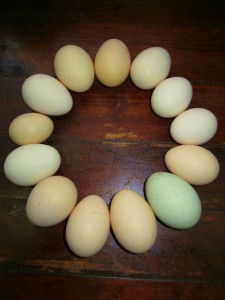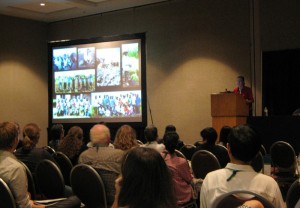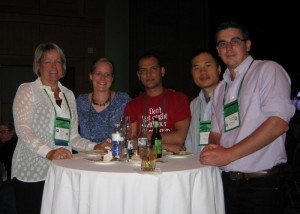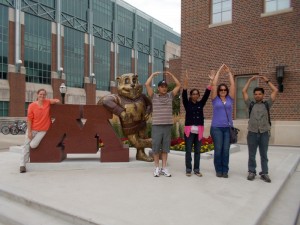This week’s post is about Tanzanian food because I am often asked what I eat here. The diet here consists of lots of fresh fruits and veggies, some meat (beef, chicken and goat are popular), and lots of carbs (rice, ugali, potatoes and more)! Here are some pics of good food (chakula kizuri!).
Uncategorized
Week 18: Field Days
This week was a busy week in the field. We visited three villages in three days to gather farmers’ feedback on the tomato variety trials and also to make final evaluations of the variety trials. For the rest of the week, I kept busy in the lab and screenhouse: taking down assays, setting up assays and prepping for more assays.
Pics from this week!
Week 17: Crunch Time!
This week (and probably most of the upcoming weeks!) was incredibly busy. I need to get my screenhouse assays all planted, so that there is enough time to do all my evaluations before I head back to Ohio. This week I took down two greenhouse assays, set up three more, and inoculated another two trials (Uff da!). I also got a few things done in the lab too! Next week, we head back into the field to wrap up our variety trials.
Pics from this week!

Lab tip of the week: Don’t have a cell scraper? Just use a microscope slide. You can flame it and reuse it!
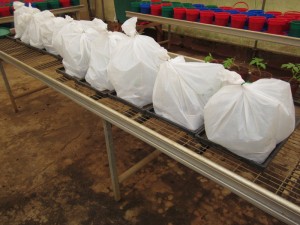
I inoculated some tomatoes with Xanthomonas and stuck them in bags to boost the humidity. Fingers crossed for good symptom development!
Week 16: Back to Tanzania
I arrived in Tanzania late Sunday evening and got back to Morogoro on Monday. On Tuesday, I was back in the lab. This week was a week of working in the lab with soils and in the screenhouse giving my plants some much needed TLC.
Not too many pictures from the week because I was busy running around between the lab and screenhouse.
Week 15: Plant Pathologypalooza
This week was the 2014 Annual American Phytopathological Society meeting. It involved lots of posters, talks, meetings, and catching up with friends. During the meeting, I gave a talk about my work in Tanzania and it went pretty well. If you’re interested, you can watch it here (it’s around the 1 hour mark): go.osu.edu/nYB All in all, the meeting was productive and successful!
I head back to Tanzania tomorrow to complete the second half of my research project.
As always, pics from this week (Thanks to Monica Lewandowski for the pic from my talk and final night celebration)!
Week 14: Karibu Minnesota!
This week I had a bit of a scenery change as I traveled to Minnesota for the annual APS meeting in Minneapolis (and as a native St. Paulite, I get to stay with my family!)
Before I left Tanzania, I got a few more assays set up and a lot of other work done.
Before the APS meeting started, I gave some of my labmates a tour of the University of Minnesota campus (my alma mater). Now that the meeting is underway, I’ve been pretty busy running between sessions and catching up with people.
And now a few pictures from the week:
Climb Ev’ry Mountain
Morogoro Town lies at the base of the Uluguru Mountains. This past weekend, I hiked with some friends up into the Uluguru Mountains to Morningside, which is an old German building. The mountains were gorgeous and reminded me a lot of the fields I hiked through in the Andes. I loved see how the crops and vegetation changed as we gained altitude. Here are some pics from the hike!
Week 13: Halfway Done
Week 13 marks the halfway point of my research trip. Things have gone by very quickly!
I kept busy this week taking down and setting up more screenhouse assays, setting up some quick and dirty pathogenicity assays, doing some soil work in the lab, and preparing for my trip next week.
No pictures this week, but here’s a list of 10 things I’ve enjoyed during the first half of my trip (in no particular order).
1. Having adventures everyday: whether it be some strange insect in my room or figuring out how to pantomine what a basket is (because I don’t know the correct word in Kiswahili), there are always exciting things that I encounter nearly everyday
2. Experiencing a new culture/country
3. Eating Tanzanian foods
4. The farmers we work with
5. Beautiful scenery
6. Friendly people
7. Discovering plants and insects that are new to me
8. Living somewhere that there are monkeys
9. Pushing my plant pathology knowledge to the limits in the field
10. Learning about everything!
Week 12: Working in the Screenhouse
This week was spent setting up assays in the screenhouse and finally taking one down (which actually worked as expected!). Next week, I will be busy taking down two more assays and hopefully, setting up more assays. Not too much else to report this week, I just have lots to do before I head back to the United States in 10 days for the APS meeting!
This week’s random information: there are tons of ants here (thankfully none in my room!) and they do things that I’ve never seen before. Here are two weird ant things I saw this week:
To Market, to Market: A Kiswahili Lesson
Morogoro Town has a large market where you can buy all kinds of fresh fruits and veggies. Here are some things you can buy there:





















